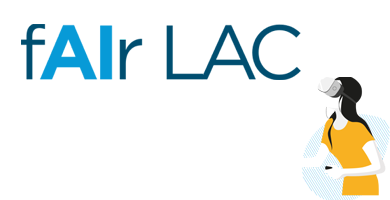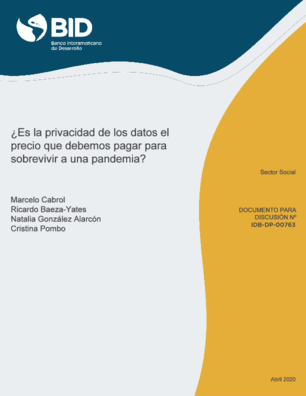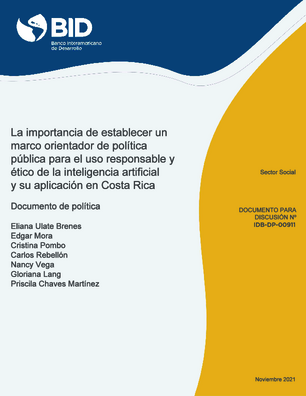Back to Observatory
Probabilistic model of the violation of the rights of children and adolescents in Colombia
Description of the service
The Colombian Family Welfare Institute (Instituto Colombiano de Bienestar Familiar, ICBF) developed two rights violations probability models based on data analytics and machine learning tools to estimate the probability that a child or adolescent may be a victim of physical and psychological violence or sexual violence in Colombia.
With c. 56 variables, these models allow to identify and target institutional efforts on groups and territories (even at the neighborhood or block level) at high risk of suffering the types of violence that most frequently lead to the admission of children and adolescents to the Administrative Process of Restoration of Rights-PARD of the ICBF (in 2020 22.5% of the 39,986 cases were due to physical and psychological violence, and neglect and 35.1% to sexual violence.)
Problem that it solves
International agencies such as UNICEF, PAHO, WHO, and UNODC, and local entities like the National Alliance Against Violence to Children and Adolescents agree on the need to adopt measures to prevent and resolve violence and violation of rights against children and adolescents. However, the institutional response to violence is usually reactive due to limited information and tools available to make decisions regarding the distribution of limited resources for prevention (Administrative Data Research Facilities Network, 2019).
In this context, these probability models of rights violations in physical, psychological, or sexual violence enable to anticipate risks for children, youngsters, and adolescents and facilitate the targeting of institutional and inter-institutional prevention efforts (the latter especially in the framework of the National Alliance against Violence).
Type of AI app used
Events detection (anomaly detection and early warning), Prediction
Main results to June 30, 2021
According to model predictions, about 19% of children and adolescents in the country are at high risk of physical, psychological, or sexual violence.
Some situations put children at a high risk of physical and psychological violence, including over-age children in preschool, elementary and middle school (34.95%); living without a mother figure (34%-37%), and being a child under five who stays alone (49.61%) or in the care of a relative under 18 (37.74%).
This risk of sexual violence targets girls and female adolescents (85.23%) and occurs most frequently in the 10 to 13 age group (35.88%) and less in the 0 to 5 age group (9.7%).
Over-age children are at the highest risk of sexual violence (28.25%), followed by having access to the internet (26.82%); not having been assisted by an ICBF Promotion and Prevention strategy (23.22%), and living without a maternal figure (24%-32%).
Three main bottlenecks faced during implementation
- Access to IT capabilities that would allow cross-validation, hyper-parameter search, and other methodologies to be applied easily.
- Ethical aspects associated with the final use of the results and the possible biases incorporated in the training of models.
- Data quality: The diversity of information sources posed a challenge in consolidating a single master base for model estimation.
Lessons learned in the design or use of AI for social impact
- The conceptual and thematic analysis of the issues associated with the design of an AI use case is much more relevant than the primary application of machine learning methodologies. So, a use case with social impact cannot be developed by simply deploying an algorithm without first considering theoretical variables and ethical consequences.
- Biases of machine learning algorithms application in social problems are extensive, and detecting and mitigating them requires effort and dedication.
- The final use of the results (how and who will use them) and training on the algorithm is vital since the types of results visualizations, aggregations or disaggregations, Prediction ranges extent, and other functionalities-configuration aspects depend on this.
Country of origin
Geographic scope of operations
Colombia
Website
https://www.icbf.gov.co/Type of executing entity
GovernmentSector/industry
Sustainable Development Goal(s) to which your AI solution contributes
5 (gender equality)
16 (peace, justice, and strong institutions)
IA app developed internally or by a third party
Internally
Name of implementing entity
The Colombian Family Welfare Institute (Instituto Colombiano de Bienestar Familiar, ICBF), Colombia
Stakeholders involved
ICBF carried out the initial development phase with the staff of its Institutional Analytics Group. Then, ICBF reviewed and compared experiences with experts from Unicef (Innovation team, New York) and New Zealand (Centre for Social Data Analytics of New Zealand). These consultations led to methodological revisions to strengthen the interpretation of the models and the ethical behavior in obtaining and using the results. Similarly, the National Planning Department (DNP) has participated in reviewing and consolidating the methodological concept implemented. Canadian Cooperation funds allocated through PADF were used to hire consultants to enhance the model implementation in the context of the National Alliance against Violence.
Percentage of the development team that are women
33%
Year they started using AI-based models
The ICBF's rights violation probability model was first used in 2021.It may interest you
This self-assessment tool is designed to allow the mitigation of ethical risks associated with the use/application of new technologies. It is available so that the ethical performance of each system can be evaluated from the beginning.
Este documento fue diseñado como insumo de una hoja de ruta que permite crear un marco para el uso ético, responsable y seguro de la IA en Costa Rica.



